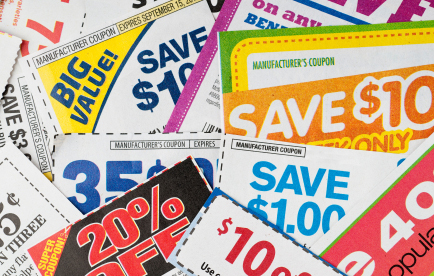
 Google-looks-to-bridge-clicks-and-b...
Google-looks-to-bridge-clicks-and-b...  Without a doubt, one of the biggest challenges of online marketing has always been understanding the relationship between online and offline behaviour. This has been an enormous problem for marketers, but also for Google. Their Adwords product has always provided excellent tracking for businesses who sell online, but for people who rely on foot traffic to keep the lights on, there’s always been that pesky gap between the last click and the in-person transaction.
Without a doubt, one of the biggest challenges of online marketing has always been understanding the relationship between online and offline behaviour. This has been an enormous problem for marketers, but also for Google. Their Adwords product has always provided excellent tracking for businesses who sell online, but for people who rely on foot traffic to keep the lights on, there’s always been that pesky gap between the last click and the in-person transaction.
In an effort to bridge that gap, Google has just announced a service called Zavers (a service they acquired late last year and have repositioned into their product set), which allows retailers and manufacturers the ability to track offers from their websites to their registers through offers linked to loyalty programs. Users can redeem offers online and have them automatically loaded into their store cards (or directly into Google Wallet). This theoretically eliminates the need for traditional coupon clipping altogether. Offers can be tailored to specific users and are applied automatically when that user’s loyalty card is scanned at the register.
Supermarkets are the natural testing ground for something like Zavers, and Google’s first round of testing is happening with stores like A&P and Price Chopper. However, you can be sure that Google’s aim here isn’t to make your mom’s trip to the grocery store a more intuitive experience. They’re after the data and the tracking, and it doesn’t take a wild imagination to see that they would want to quickly apply this concept to all categories of retail.
Google has studied the link between search and offline purchase for a long time, releasing all kinds of studies that show correlation between online spending and in-store sales in hopes of getting retailers to pony up more Adwords cash. While this data may make a compelling case, it has still been somewhat theoretical. A solution like Zavers could allow Google to make an empirical link between all kinds of online behaviour and the physical ring of the cash register.
Imagine a scenario where a consumer is exposed to a display ad for a specific product on the Google Display Network (or any network, really). That person is cookied, so when they go back two days later and conduct a search on that product and click on a paid search ad for a retailer, that tracking carries through. When they do a branded search for the retailer the next day, click on the site and redeem some kind of offer, the retailer has a view to that entire cycle. There’s nothing new here yet. However, if the retailer is part of this Zavers program, that unique offer would be saved to the user’s loyalty card (or even Google Wallet), so when the consumer goes into the store, that offer is automatically applied at checkout, giving the retailer a complete attribution from awareness all the way down to the dollars and cents of the actual transaction. That’s pretty cool.
The benefits to retailers are pretty obvious here. This would allow them a 360 view of their digital marketing efforts, giving them the ability to optimise online campaigns and spend to actual dollars in real time. The benefits to Google are pretty much the same. Despite the predominance of search marketing, there is still a shocking amount of scepticism about the efficacy of paid search (and online display) for bricks and mortar businesses. Zavers could allow Google to answer that scepticism with the confidence that only comes from compelling, real-world data. I expect Google to be releasing a whole bunch of compelling case studies later this year.
Interested in finding out more? Contact DAC today.

